Key points
- Harmful algae can make water smell bad, discolor water, or look like scum, spilled paint, or foam.
- Look for signs of harmful algae before going in lakes, oceans, or other bodies of water.
- Avoid getting sick by staying out of the water if it looks or smells bad.
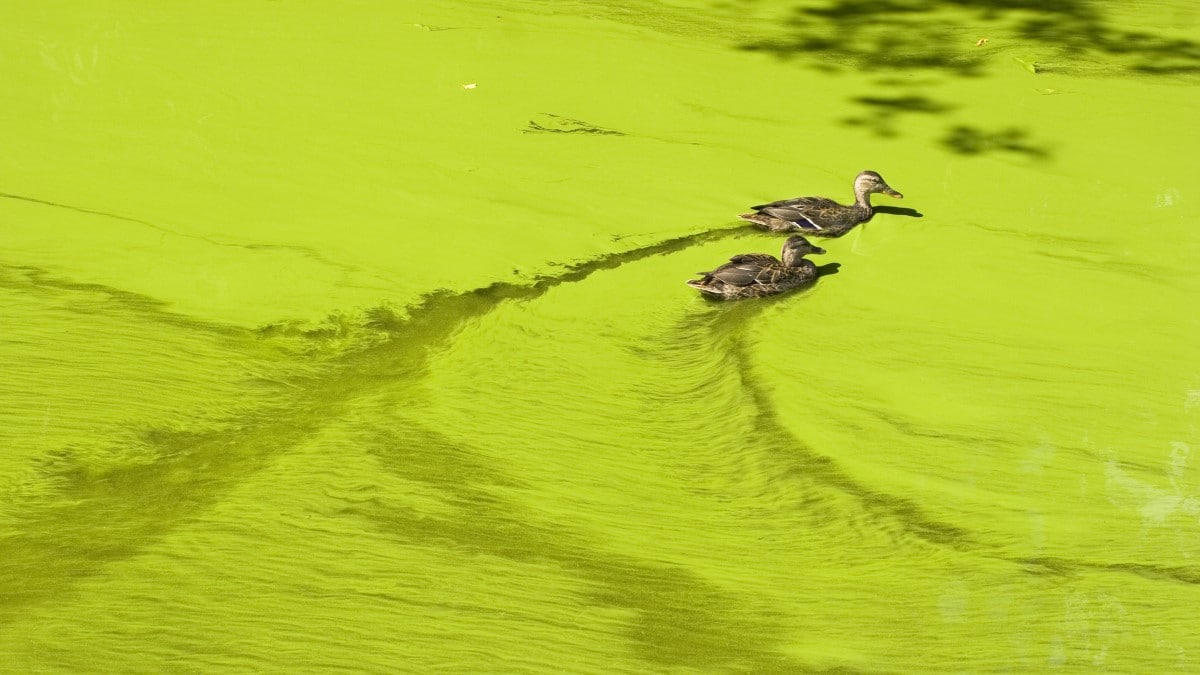
Why it's important
Learning to recognize signs of a harmful algal bloom, and staying out of water if you see one, can help you avoid getting sick.
Government agencies and other organizations are not able to monitor all bodies of water for harmful algal blooms. This means there will not always be an advisory posted near the water or online to warn you that a body of water has a harmful algal bloom.
Signs of a harmful algal bloom
In lakes, rivers, and other fresh water
Harmful algal blooms of cyanobacteria (also called blue-green algae) grow in fresh water.
When they grow on the surface of the water, these harmful algal blooms can look like:
- Scum
- Spilled paint
- Foam
- Mats or globs of algae
They can change the color of the water to:
- Blue
- Green
- Brown
- Yellow
- Orange
- Red
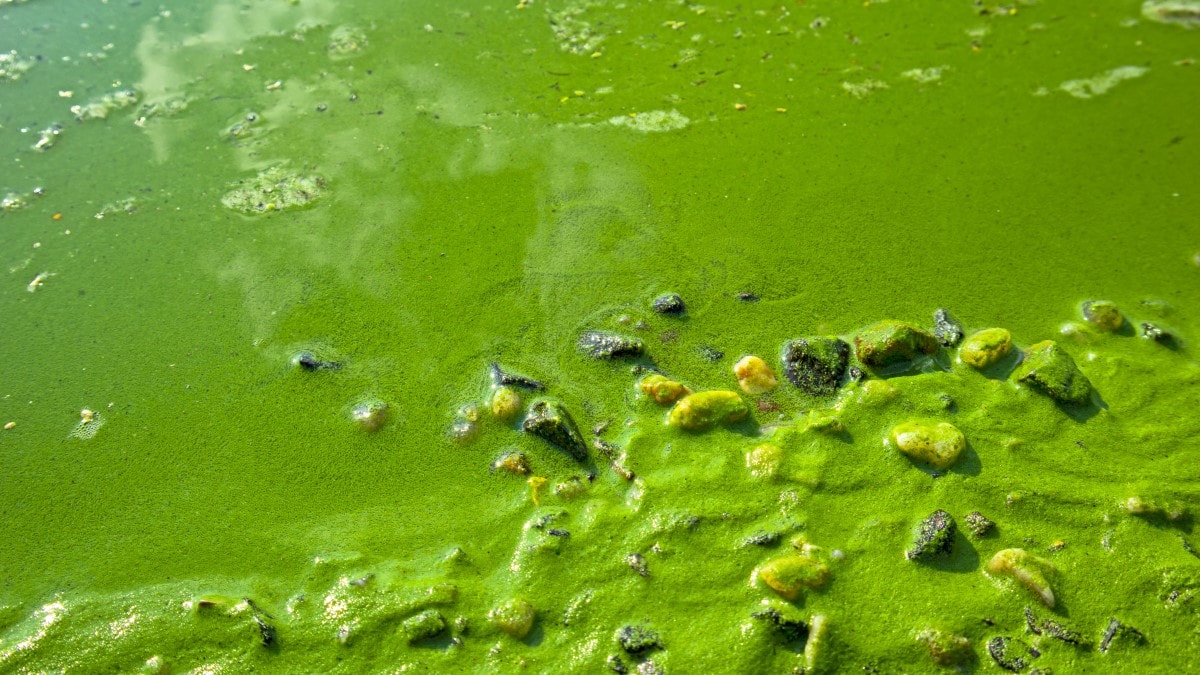
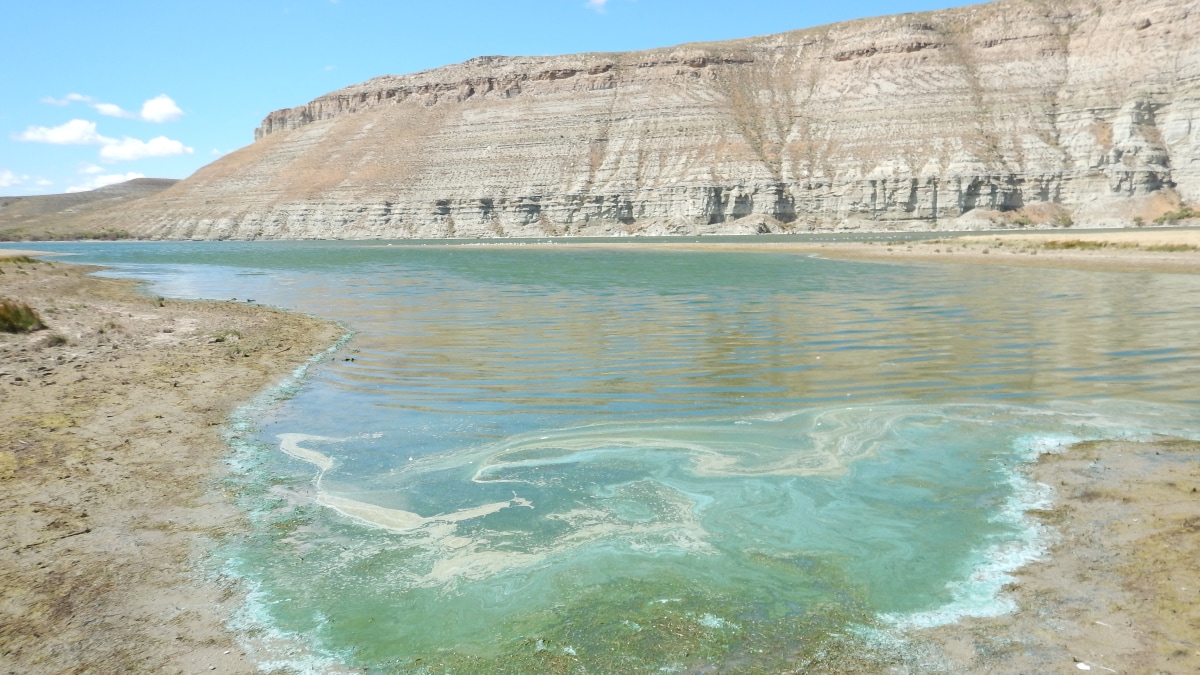
Wyoming Department of Environmental Quality
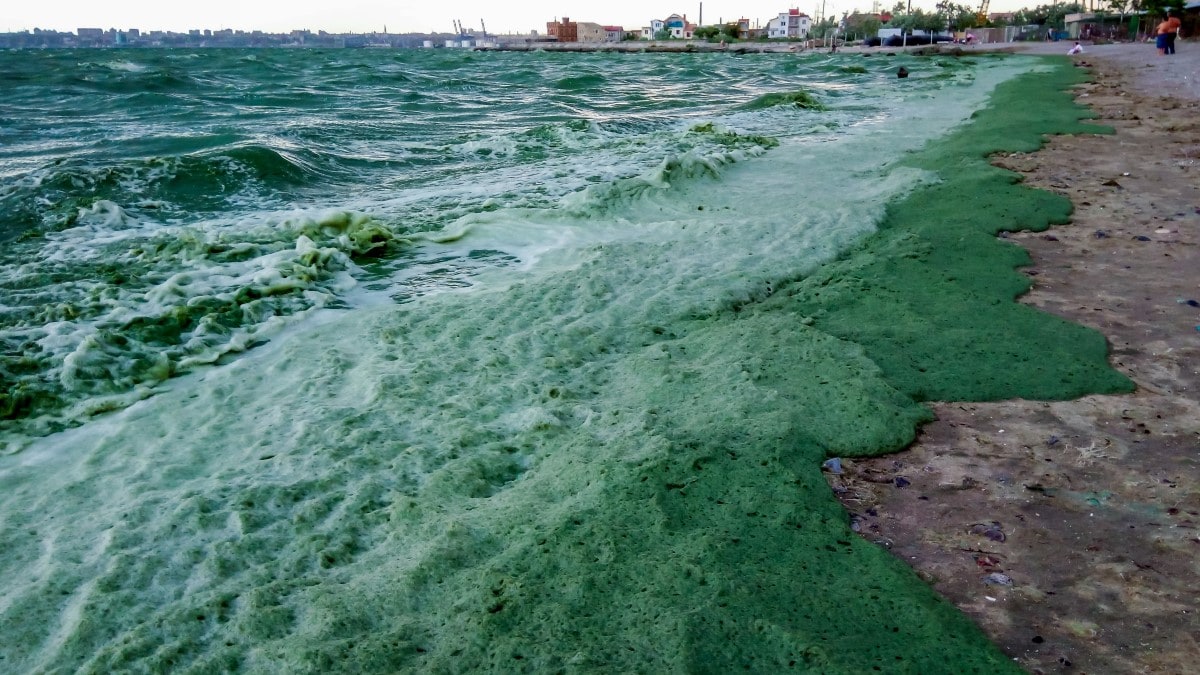
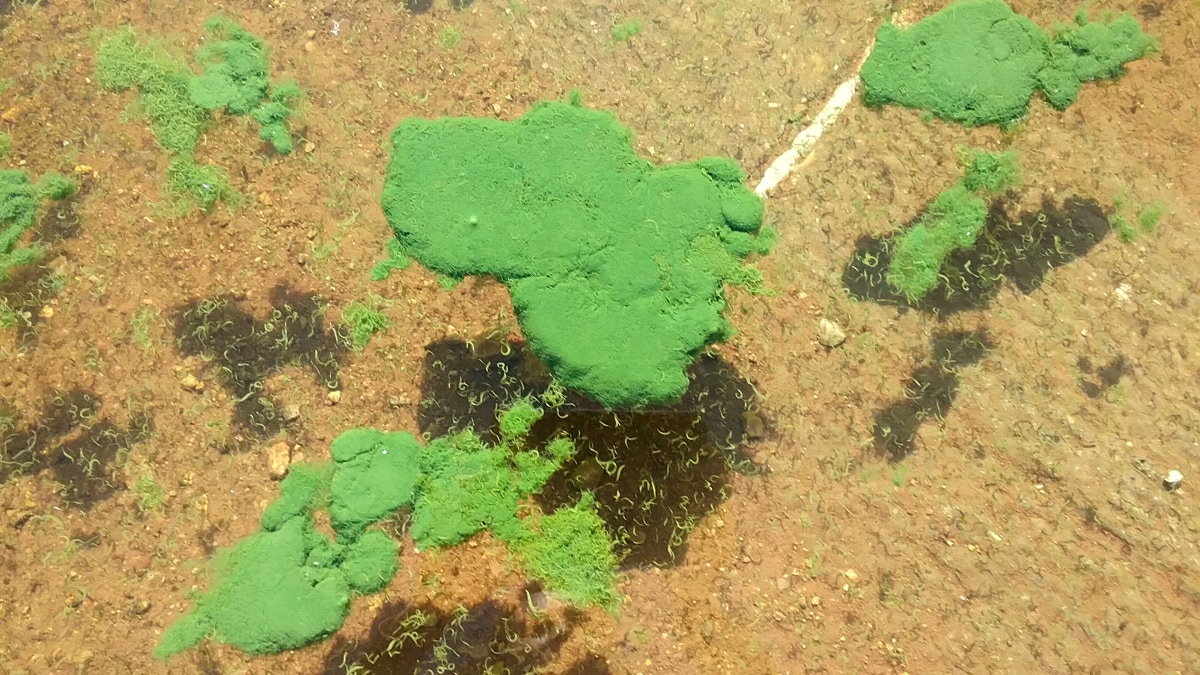
Utah Department of Environmental Quality
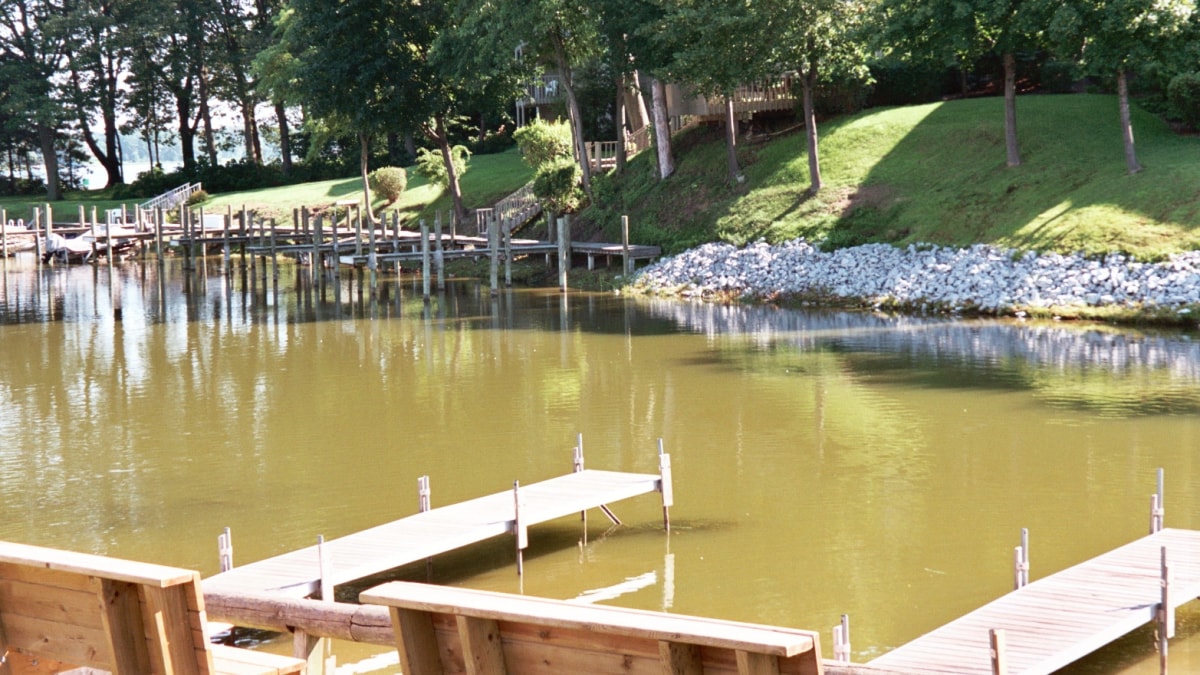
Lorraine Backer
In oceans and other salt water
Harmful algal blooms that grow in salt water can change the color of the water to:
- Red
- Brown
- Orange
- Yellow
You can sometimes see other signs of a harmful algal bloom in the water or on the shoreline, such as:
- Mats of algae
- Dead fish or other animals
- Foam
- Scum
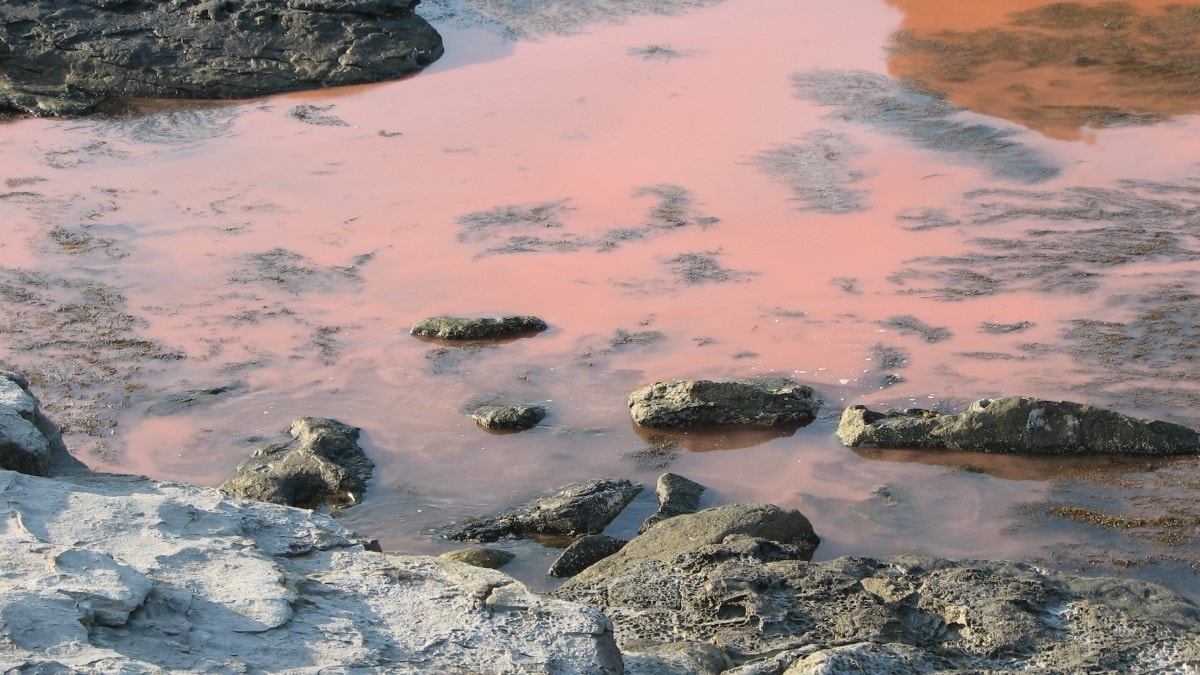
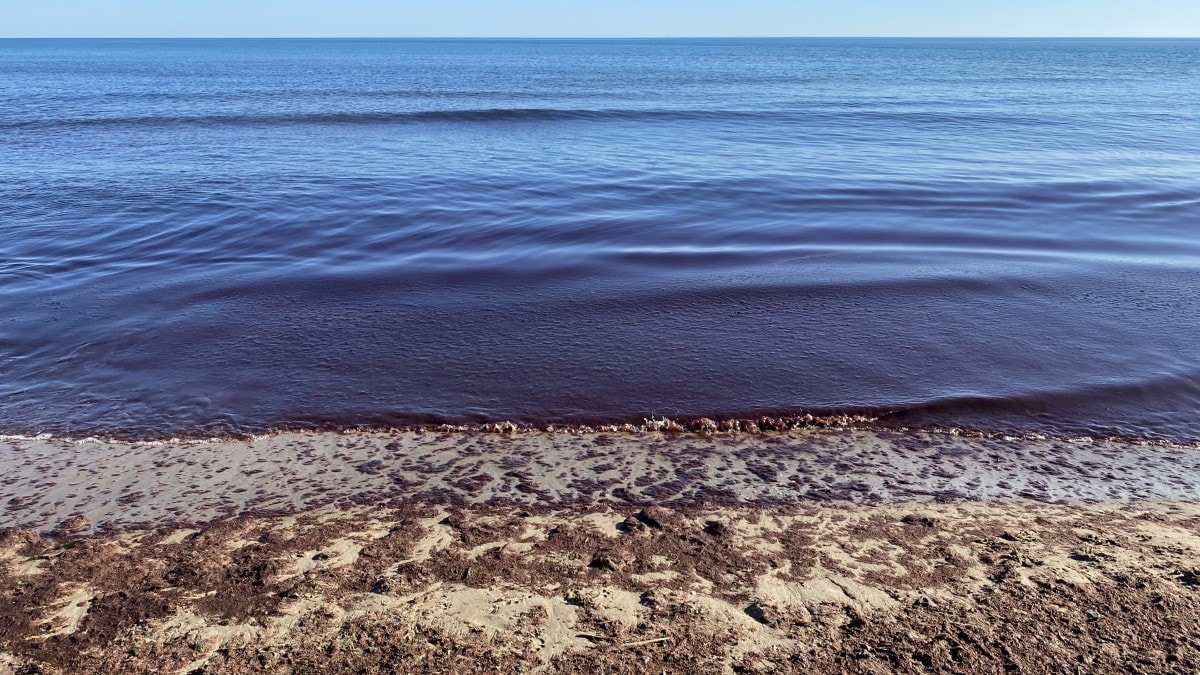

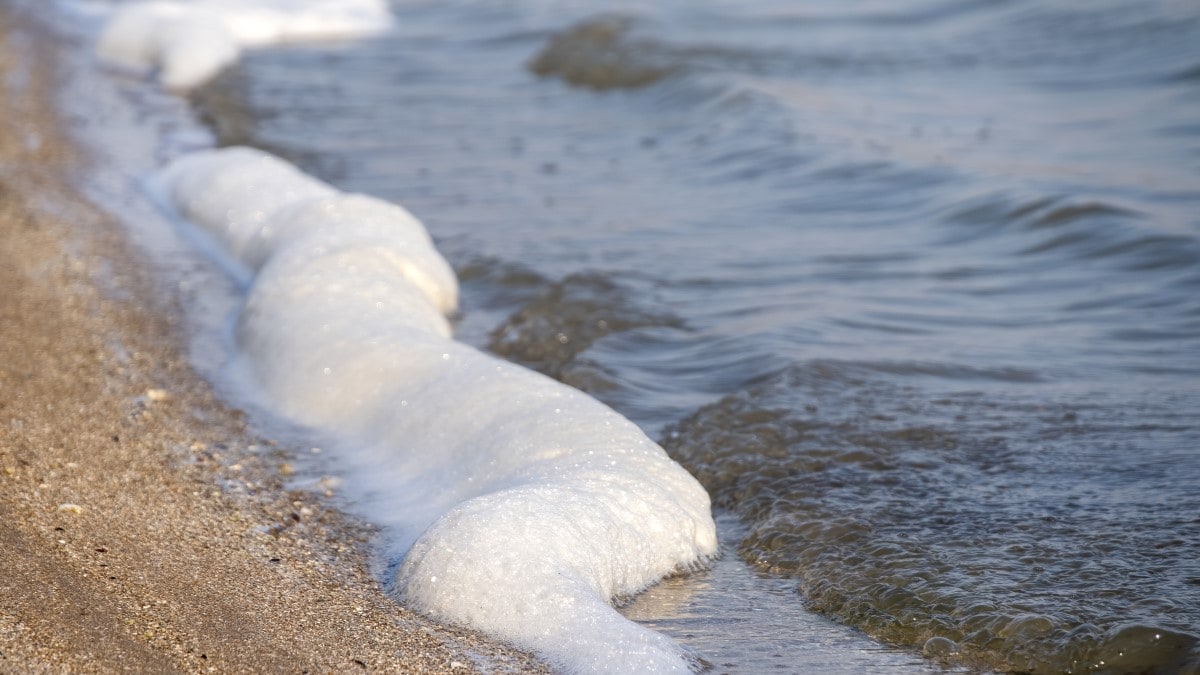
Blooms that grow under the water
You cannot see all harmful algal blooms. Some grow on or near the bottom of water bodies and release toxins into the water. These types of harmful algal blooms can grow in fresh water (such as rivers) or in salt water (such as oceans). They can be hard to see because they do not change how the surface of the water looks.
The algae from these underwater blooms can wash up on the shore.
Tips
Check for advisories
Before visiting bodies of water, check for and follow swimming or fishing advisories. Look online or near the water for advisories from your local government. Follow the advice to avoid getting sick.
Check for signs of a bloom
Stay out of the water if there are signs of a harmful algal bloom. For example, stay out of the water and keep kids and pets away if water is discolored, scummy, or smelly.
Avoid touching algae that has washed up on the shore and keep kids and pets away from the algae. Algae that have washed up from a harmful algal bloom can still contain toxins that make people and animals sick.
